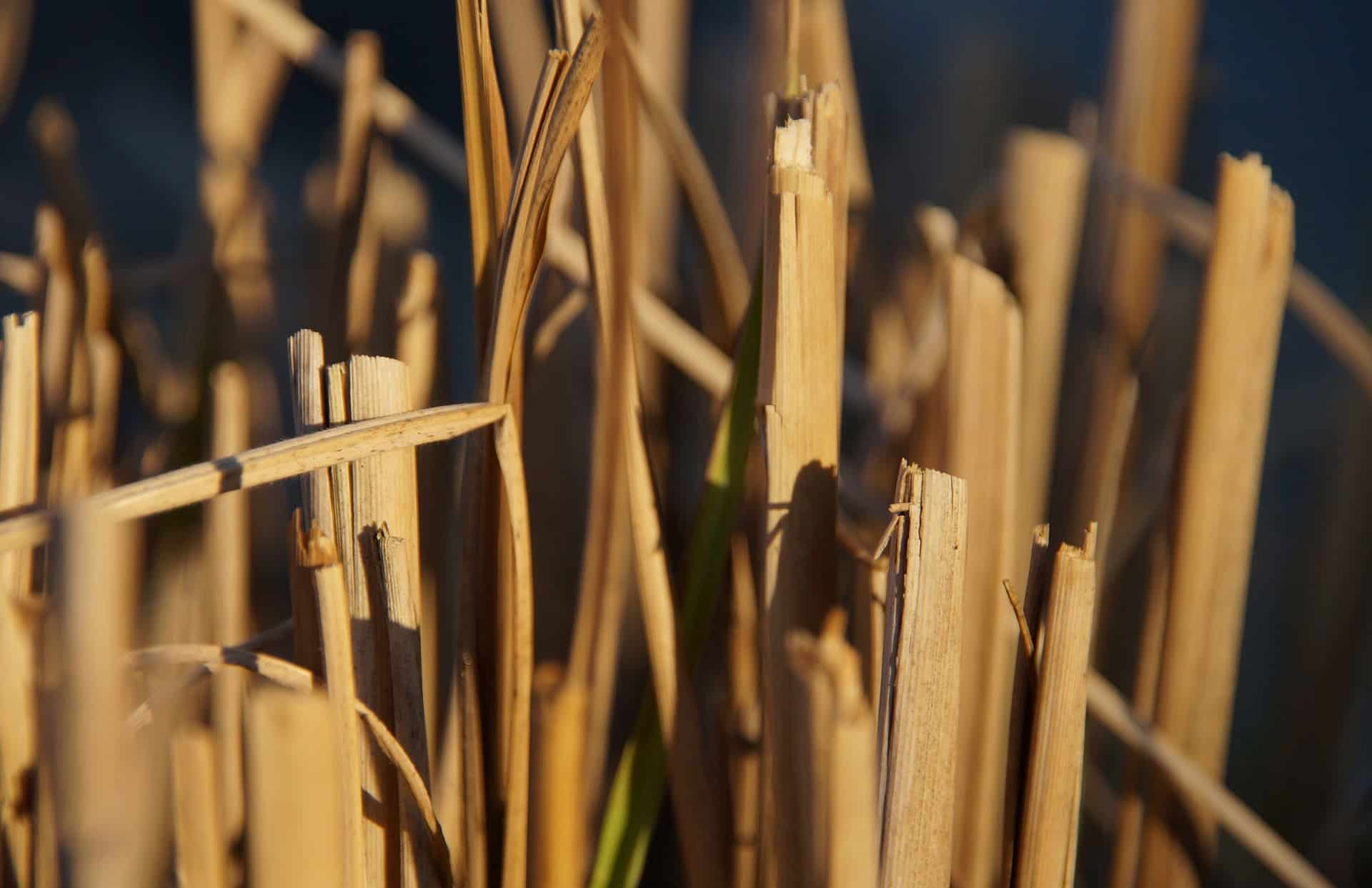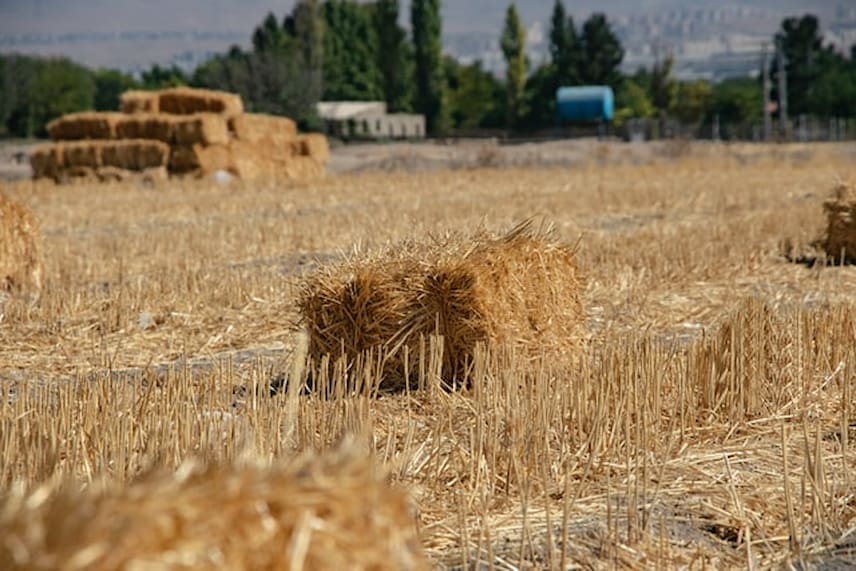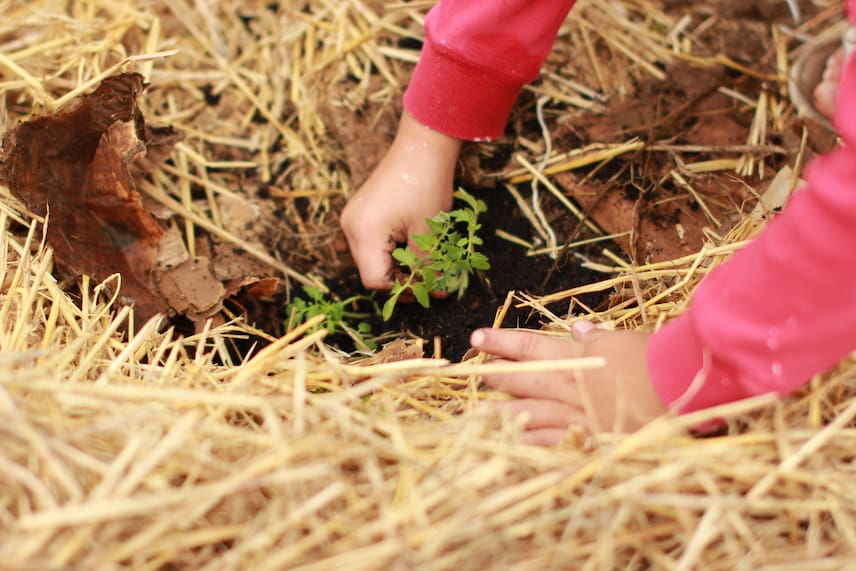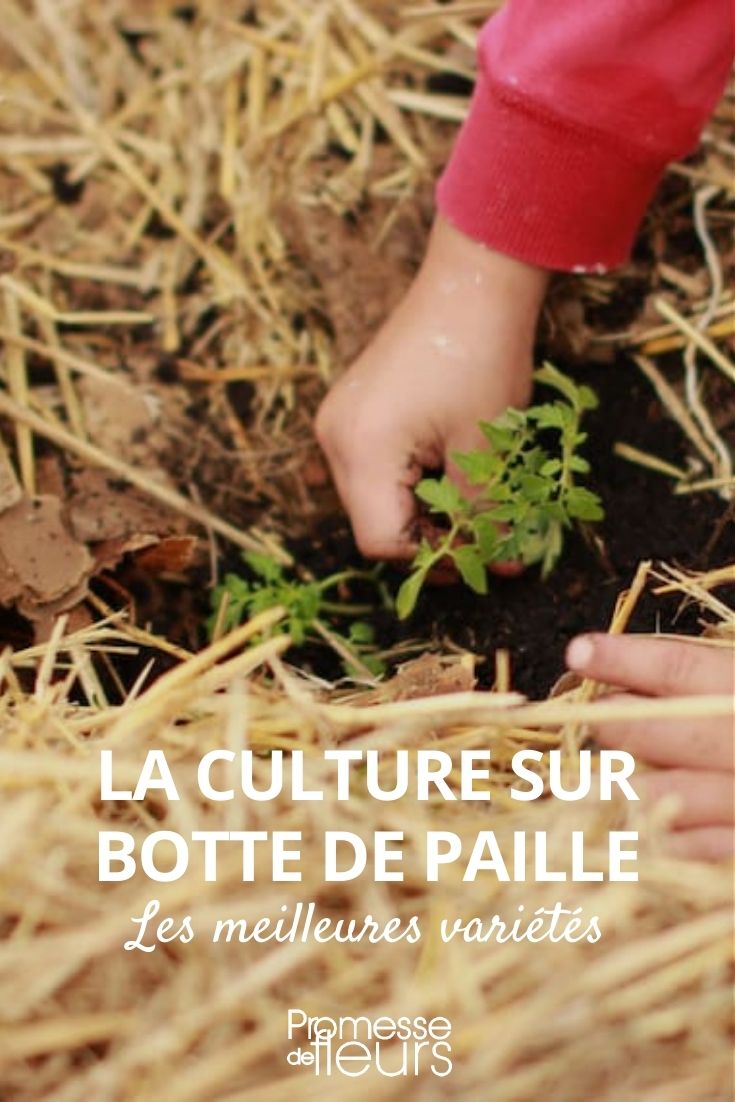
Straw-bale gardening
Original concept for soilless cultivation
Contents
We’re not trying to leave you high and dry! Yet straw bale growing is a technique to grow beautiful vegetables, small fruits, flowers and aromatic plants soilless, with very little effort. Is soil in your vegetable garden very poor? Do you live in an urban medium and only have a tiny yard, or even just a balcony? Try this concept developed by Joël Kartsen in the United States in the 1960s that may seem revolutionary: straw bale offers a well-draining, airy and above all nutrient-rich medium, where it is possible to sow and plant. We explain how and when to proceed to adopt straw bale growing.
What exactly is straw-bale gardening?
Straw bale gardening (« straw bale gardening » in English) is a cultivation method completely independent of soil. Vegetables, small fruits, aromatic herbs and flowers do not take root in soil but between the strands of straw that make up the bale. Concretely, the bale can be placed on any soil, whether infertile soil, a short grass meadow, a concrete slab, or even the soil of a terrace or balcony. With straw bale gardening, gardening is therefore possible in a hostile, unsuitable medium.
However, straw alone is not enough. Indeed, it is necessary to initiate a decomposition process by adding water and supplying nitrogen. Thus, simply add blood meal, horn meal, guano, chicken manure, farmyard manure or nettle liquid manure, and possibly wood ash. Under the action of bacteria and thanks to regular additions of water, the straw will decompose and form an ideal medium for plant growth, with a constant temperature of around 20 °C.
Read also
Lasagna gardeningWhich straw should I use?
Choice of straw bale is essential for success of this type of cultivation. Above all, you must be certain that the cereals were grown in organic agriculture or in integrated farming, without use of pesticidals, fungicidals and other treatments.
Prefer wheat straw rather than barley, oat or rye straw, which decompose more slowly. Conversely, a hay bale, which is ultimately only herb, is not recommended because adventive plants would grow faster than your vegetables.

The bale must be tight enough to retain irrigation water and organic matter, and above all at least 2 years old. Thus, the decomposition process will already be slightly under way. Finally, a 25 kg bale seems to be the ideal weight.
The hardest part remains obtaining straw bales. Try knocking on the doors of farmers or poultry breeders who will be happy to sell you unusable bales.
How to plant or sow on a straw bale?
First of all, straw bales must be placed in full sun and turned so the stalks are vertical.
Before starting to grow on a straw bale, it is necessary to ‘prepare the ground’, in this case the straw. It must reach the right degree of fermentation before sowing or planting. This step takes about ten days.
The steps to carry out this process successfully:
- Place the straw bale on a plastic sheet twice the size of the bale, at its final position. Bear in mind a wet bale will be difficult to move.
- Water the bale for three days.
- Cover the straw bale with a dose of nitrogen fertiliser and a layer of compost.
- Seal the plastic sheet tightly over the straw bale
- After 10 days, fermentation is complete and straw temperature reaches 20°C.
- Remove the sheet.
It is also possible to proceed without a plastic sheet by watering and adding nitrogen fertilisers each day while gradually reducing doses. Again, after 10 days, the straw is ready.
Which plants for growing on a straw bale?
As original as it may be, straw cultivation is not suited to all plants. Thus, fruit vegetables such as tomatoes, aubergines, the large family of squashes and courgettes, peppers and chillies, melons will appreciate this ‘substrate’ rich, aerated and well-drained.

Seed vegetables such as beans, broad beans or peas can also thrive, roots in the straw. Just like strawberries which will find ideal ground to grow.
However, root vegetables such as carrots, radishes and beetroot are less suited to growing in straw bales.
Also feel free to plant herbs or flowers that will add a decorative touch.
Advantages of growing on straw
Using a straw bale as growing medium offers many advantages:
- Straw bale can be placed anywhere, even in urban medium.
- Pushing several bales together gives rustic charm to your outdoor space.
- No digging, no hoeing, no weeding… Gardening becomes child’s play.
- No backache because straw bale is raised. It is a cultivation method that can be adapted for elderly people or people with reduced mobility.
- With medium being warm, straw bale is ideal for early sowing and late-season crops.
- Biodiversity is ensured because micro-organisms develop within the straw.
- It is a zero waste solution because, after two years of cultivation, straw becomes mulch for vegetable garden.
A few minor drawbacks
- Straw bale growing requires regular watering. If you have a rainwater collector, that’s perfect.
- Organic fertiliser applications are just as regular as watering.
- Straw bale growing requires rigour and increased attention.
- Subscribe!
- Contents
































Comments